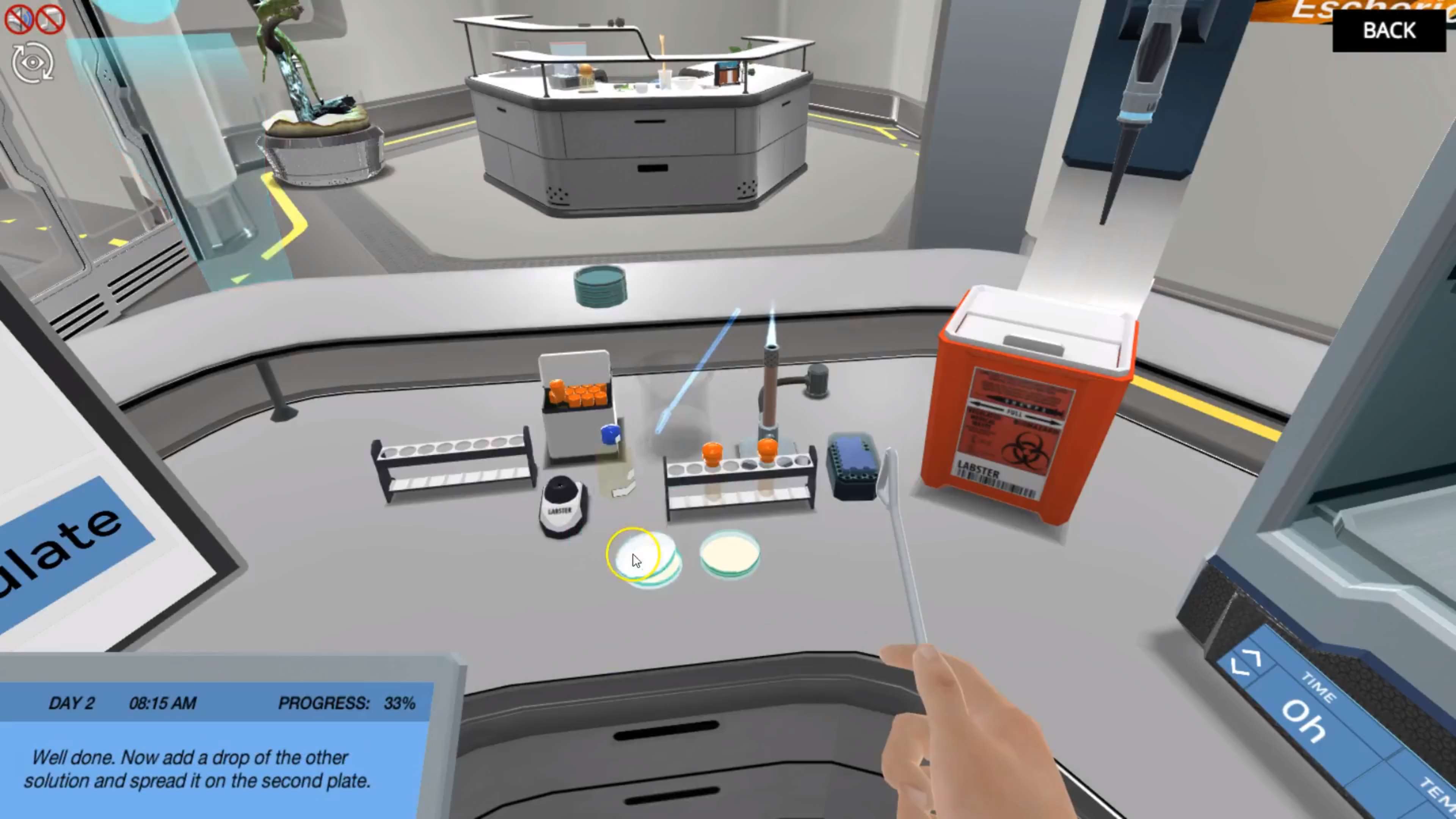Heading 1
Heading 2
Heading 3
Heading 4
Heading 5
Heading 6
Lorem ipsum dolor sit amet, consectetur adipiscing elit, sed do eiusmod tempor incididunt ut labore et dolore magna aliqua. Ut enim ad minim veniam, quis nostrud exercitation ullamco laboris nisi ut aliquip ex ea commodo consequat. Duis aute irure dolor in reprehenderit in voluptate velit esse cillum dolore eu fugiat nulla pariatur.
Block quote
Ordered list
- Item 1
- Item 2
- Item 3
Unordered list
- Item A
- Item B
- Item C
Bold text
Emphasis
Superscript
Subscript
About This Simulation
Use the serial dilution technique to quantify the effect of a novel antibiotic compound on bacterial growth.
Learning Objectives
- Set up a serial dilution of a bacterial culture and describe why they are used.
- Calculate the cfu/ml from colonies counted on an agar plate, given the dilution factor and volume correction factor.
- Set up an experiment and interpret your results.
- Provide examples of why bacterial growth rates have to be measurable/characterized
About This Simulation
Lab Techniques
- Serial dilution
- Colony forming unit calculation
- Learning
- Aseptic Technique
Related Standards
- No direct alignment
- No direct alignment
- B.1 Microbiology: organisms in industry
Learn More About This Simulation
Did you know that it’s possible to count bacteria with your naked eye? In this simulation, you will learn how to quantify bacteria using the process of serial dilution.
Find a novel antibiotic compound
Your colleague has just returned from an expedition to the Amazon rainforest, and has brought back a promising sample; a fungus that seems to inhibit bacterial growth. Your mission is to quantify the effect of this antibiotic compound on bacterial growth. But, you will only be able to succeed if you manage to combine smart experimental design, some simple mathematics, and proper microbial culture techniques.
Inquiry-based approach to quantify bacteria
Figure out how to quantify the bacterial cells by inquiry-based learning. You will learn much more by trial and error, and if you are up for the challenge you will be rewarded with some extra questions. Don’t worry, your virtual assistant, Dr. One, will be ready to answer your questions and guide you through the steps needed to perform the serial dilution. Make sure you use sterile techniques to avoid contaminating your bacterial cultures!
Don’t waste time and agar plates
In a real lab, this experiment would take a week or more to complete, but in this simulation it only takes 30 minutes! Plate out countless agar plates in order to quantify the colonies from your serial dilutions, but don’t worry, not a single plate will be wasted. You will learn how to calculate the colony forming units per milliliter (cfu/mL) of your bacterial culture using a cfu calculator.
Quantify the bacterial growth
Last, you will incubate the bacterial culture with the antibiotic compound to quantify the effect of the compound on bacterial growth.
Will you be able to determine if the fungal compound can be used as a new antibiotic?
For Science Programs Providing a Learning Advantage
Boost STEM Pass Rates
Boost Learning with Fun
75% of students show high engagement and improved grades with Labster
Discover Simulations That Match Your Syllabus
Easily bolster your learning objectives with relevant, interactive content
Place Students in the Shoes of Real Scientists
Practice a lab procedure or visualize theory through narrative-driven scenarios


FAQs
Find answers to frequently asked questions.
Heading 1
Heading 2
Heading 3
Heading 4
Heading 5
Heading 6
Lorem ipsum dolor sit amet, consectetur adipiscing elit, sed do eiusmod tempor incididunt ut labore et dolore magna aliqua. Ut enim ad minim veniam, quis nostrud exercitation ullamco laboris nisi ut aliquip ex ea commodo consequat. Duis aute irure dolor in reprehenderit in voluptate velit esse cillum dolore eu fugiat nulla pariatur.
Block quote
Ordered list
- Item 1
- Item 2
- Item 3
Unordered list
- Item A
- Item B
- Item C
Bold text
Emphasis
Superscript
Subscript
A Labster virtual lab is an interactive, multimedia assignment that students access right from their computers. Many Labster virtual labs prepare students for success in college by introducing foundational knowledge using multimedia visualizations that make it easier to understand complex concepts. Other Labster virtual labs prepare learners for careers in STEM labs by giving them realistic practice on lab techniques and procedures.
Labster’s virtual lab simulations are created by scientists and designed to maximize engagement and interactivity. Unlike watching a video or reading a textbook, Labster virtual labs are interactive. To make progress, students must think critically and solve a real-world problem. We believe that learning by doing makes STEM stick.
Yes, Labster is compatible with all major LMS (Learning Management Systems) including Blackboard, Canvas, D2L, Moodle, and many others. Students can access Labster like any other assignment. If your institution does not choose an LMS integration, students will log into Labster’s Course Manager once they have an account created. Your institution will decide which is the best access method.
Labster is available for purchase by instructors, faculty, and administrators at education institutions. Purchasing our starter package, Labster Explorer, can be done using a credit card if you are located in the USA, Canada, or Mexico. If you are outside of North America or are choosing a higher plan, please speak with a Labster sales representative. Compare plans.
Labster supports a wide range of STEM courses at the high school, college, and university level across fields in biology, chemistry, physics, and health sciences. You can identify topics for your courses by searching our Content Catalog.















